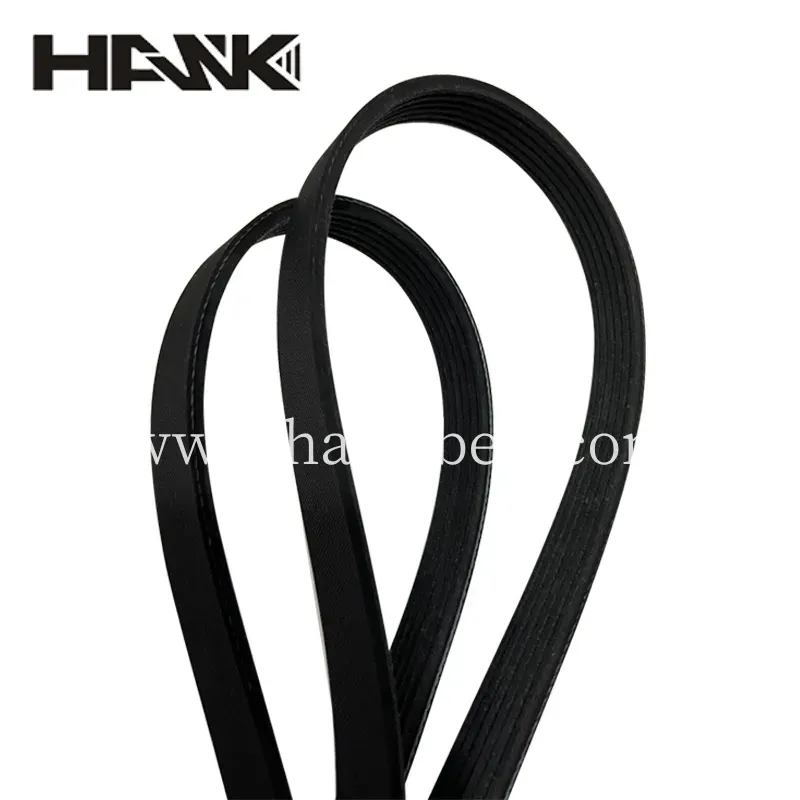More than you would initially imagine, drive belts play a large role in your car. In fact, no vehicle will run very long without belts in place – if it will run at all! It might seem counterintuitive to use belts in the hot engine compartment since rubber tends to be fragile, but the belts used in a car are much more than just rubber.
“What are belts made of?”, you might ask. Looking back more than ten years ago, belts were typically made of neoprene rubber, reinforced by strands of cotton and layered with Kevlar. These belts were strong and lasted from 80,000 to 125,000 kilometers. Today’s drive belts are made of Ethylene Propylene Diene Monomer (EPDM) rubber that lasts up to 160,000 kilometers or more, barring unforeseen failures. EPDM rubber is stiffer than neoprene and resists stretching better.
How many belts your car has depends on the make and model you drive. It may have just one long serpentine belt or it may have two or three accessory drive belts. That’s in addition to a timing belt, if your car is equipped with one.
What styles of belts are on the market today? How are they used on the engine? Trodo has the descriptions of each belt for you, and you can find replacement belts for your car at Trodo.com and have them delivered to your door.
V-Belt
The oldest style of belt is still in use today on some cars today, particularly for accessories like power steering pumps and air conditioning compressors. Whether your newer car has a V-belt for accessories or you need a replacement for an older car’s water pump, the design remains constant.
A V-belt is named for its shape. If you look at a cutaway image of a V-belt, you’ll see that the wedge-like shape makes a V. Pulleys are manufactured with a corresponding groove, and the V-belt turns the pulley due to friction on both sides of the V.

Because there are only two points of contact between the belt and the pulleys, any looseness or high-torque acceleration can cause the belt to slip, increasing the potential for wear.
Power steering belt
V-belts are often used for power steering pumps, particularly on older models. The belt runs around the power steering pump pulley, a groove in the crankshaft pulley, and along a belt tensioner.
Air conditioning belt
Like power steering belts, an A/C belt tends to be used in older cars prior to when serpentine belts became popular. The belt would spin the A/C compressor clutch and would be held taut from either a manually-adjustable tensioner or a spring tensioner.
Alternator belt
Again, it used to be common for an alternator to have a dedicated V-belt. The belt would fit in the groove on the alternator pulley and cycle with the rotation of the crankshaft, and a tension from the alternator bracket would hold the belt tight.
V-belts once lined the walls and shelves of parts stores worldwide. They’ve since become less common, giving way to the more sophisticated serpentine belt or V-ribbed belt.
Serpentine belt or v-ribbed belt
By far, the most common style of belt in today’s cars is the serpentine belt. The belt’s name comes from its purpose, and that’s to ‘snake’ around all the pulleys under the hood.
A serpentine belt, also known as a V-ribbed belt, Uses the same principle as a V-belt but in a more reliable manner. The belt is flat on one side while on the other side, multiple shallow V grooves add extra surface area for the belt to grip onto pulleys.

The benefit of the serpentine belt is that it has more grip on pulleys and tensioners. The multiple grooves reduce slippage exponentially, helping the belt to last longer. Another bonus is that there are fewer parts to potentially fail. However, if the serpentine belt does break, you’re likely to lose function in multiple safety systems at the same time.
In most cars, one serpentine belt operates all the accessories together. It can dependably turn the alternator to generate electricity, the power steering pump, the water pump, and the air conditioning compressor. There may be one or more idler pulleys that aid the belt in changing direction along with a strong spring-style tensioner pulley.
It’s possible for some vehicles to have two serpentine belts that split the duties under the hood. Or, a car may have a V-ribbed belt plus a normal V-belt that work in tandem.
Timing belt
No matter what kind of car you drive, the crankshaft needs to be synchronized with the camshaft or camshafts. For some cars, a timing chain is used to engage the crankshaft gear with the camshaft sprockets. On others, a rubber timing belt is used to make the crankshaft and the camshafts turn in perfect timing.

A timing belt is a thick, durable rubber belt with large teeth running perpendicular to the belt. These teeth fit exactly into the cogs on the camshaft and the crankshaft, and the belt is tightly held in place with a hydraulic timing belt tensioner. Timing belt guides on either side ensure that the belt doesn’t vibrate or wear against metal components. And to protect the timing belt, it’s hidden behind the timing belt cover on the front of the engine.
For many modern cars, the timing belt is also responsible to turn the water pump, keeping the engine cool. If that’s the case for your car, it’s recommended to change the water pump at the same time as the timing belt. A timing belt kit may contain not just the belt itself, but the tensioner and the water pump as well.



